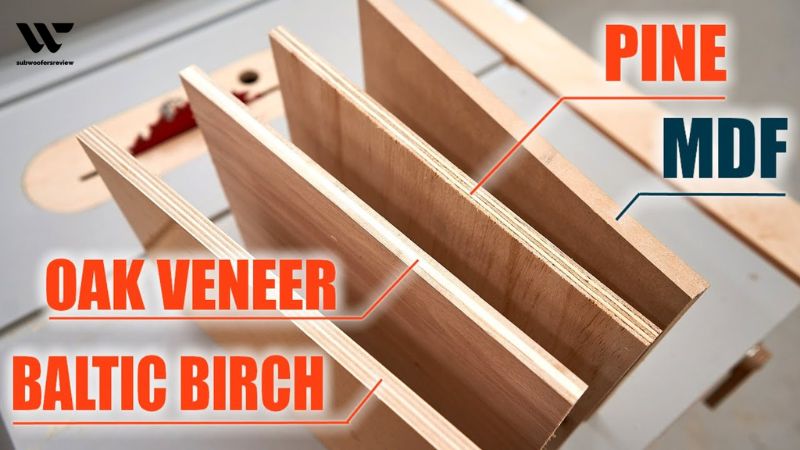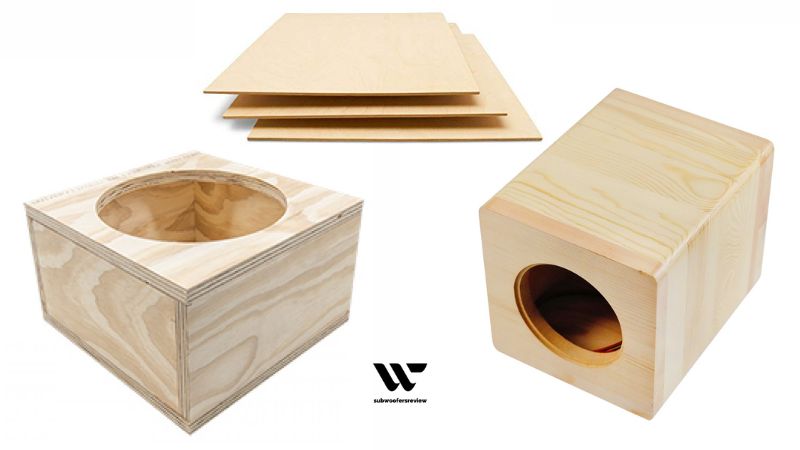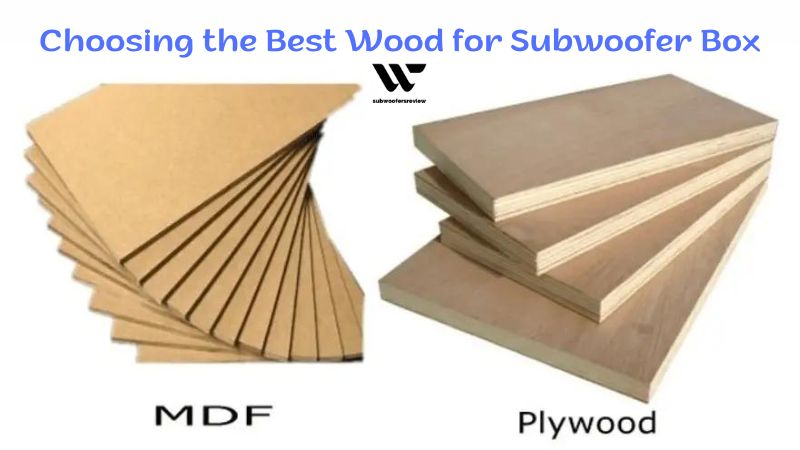When it comes to building a subwoofer box, there are numerous factors to consider. One of the most crucial elements that often gets overlooked is the choice of wood. The type of wood you use can greatly impact the sound quality and overall performance of your subwoofer. So, what is the best wood for subwoofer box?
We will explore the numerous possibilities available and emphasize their distinctive qualities as we dig into the world of wood selection in this blog. So, whether you’re a seasoned audiophile or a beginner looking to upgrade your sound system, join subwoofersreview as we uncover the secrets to choosing the best wood for your subwoofer box.
Which Wood should I Use to Make a Speaker Box?
You must be very picky when selecting the wood for the cabinet, in contrast to selecting a guitar case. Because not every wood has that ability. You’re going to require some unique, specially manufactured timber materials. When building speakers, choose the best wood available if you want them to produce the best outcomes. The ideal subject matter will keep the speaker in top form and maximize their effectiveness.
According to the size, shape, and speaker type you plan to utilize, the sort of wood that will be used to construct the enclosure will vary significantly. Harder, heavier timbers like oak, poplar, or maple are especially beneficial for boxes designed for a huge subwoofer. The durability and unwelcome vibrations of thicker wood are reduced.
Plywood and MDF (medium density fiberboard) are more common and cost-effective solutions for smaller speakers. A lot of different types of wood, including chipboard, can also be used to construct enclosures, though some people argue that because of their irregular density, they perform less well acoustically.

What do you Know about the Woods for Subwoofer Box?
Depending on the subwoofer model you’re using, your budget, and personal preferences, the sort of wood utilized for the subwoofer box will vary. In order to achieve the correct sound, speaker boxes are often tuned from a range of materials. MDF (medium density fiberboard), plywood, and chipboard are the three materials that are most frequently used to create loudspeaker enclosures.
Medium-density fiberboard (MDF), which is dense and long-lasting, is the most preferred material for bass-reflex subwoofers. Furthermore, it is fairly affordable. As it provides marginally superior sound suppression than thinner MDF, many people choose 1-inch thick MDF for sealed boxes. However, it is more expensive and heavier than MDF. Another common option is plywood.
Chipboard is a fantastic alternative if you’re searching for a lightweight, affordable material, but it isn’t as strong as MDF or plywood. In the end, your demands and preferences will determine the sort of wood you pick for the subwoofer box. The strength, size, or kind of loudspeaker being used are typically what dictate the sort of material to be utilized.
The enclosure needs to be stronger and built of plywood or MDF if the speaker has heavy magnets or a powerful bass. Because they are sturdy and good at suppressing vibrations, plywood and MDF are frequently the materials of choice. Any speaker size or shape can be accommodated by cutting and shaping them into the necessary box shape.
When building portable speaker boxes, chipboard is frequently utilized. It can be painted or textured as desired, and it is inexpensive. The sound output, however, can be negatively impacted by chipboard since it is less resilient than plywood or MDF.
MDF is a suitable option for cabinets because it can effectively block sound leakage and is typically more affordable and thicker than plywood. Its smooth surface and thickness make it the ideal basis for installing speakers because it is thicker than plywood.
Typically, layers of wood veneer are squeezed and then pressed together to create plywood. A robust, flexible, light-weight material that is ideal for small bends and turns can be produced with this procedure. Additionally, plywood is more effective in reducing reverberation and spreading sound.
Regardless of the material selected, the speaker box needs to be carefully constructed to ensure precise and clear sound. In addition, additional factors like insulation need to be taken into account. Insulation helps control the temperature of the speaker and absorbs any unwanted sound.

What is The Best Wood for Subwoofer Box?
Depending on the size, type, and design of the subwoofer, a certain variety of wood may be utilized to construct the enclosure. The most typical types of wood used for subwoofer boxes are 18mm birch plywood, MDF (Medium Density Fiber Board), or particle board. These materials have good acoustic qualities and are strong enough to resist the subwoofer’s vibrations for extended periods of time.
Large subwoofer boxes work best with birch plywood since it is both strong and lightweight. For smaller boxes that require more control over resonance and reverb, MDF is a viable option because it is heavier and thicker than birch plywood. Due to its unstable qualities and lack of soundproofing, chipboard is rarely used.
Baltic Birch and MDF (Medium Density Fiberboard) are the two greatest types of wood for cabinets. Also highly suggested is well-known plywood like Marine Grand Plywood. Pine and oak are excellent choices if you want to use only wood for your cabinets.
It’s crucial to choose the appropriate fastening materials in addition to the appropriate wood for your subwoofer box. Use construction-grade glue or galvanized wood screws to make sure the seal is effective. If at all feasible, smooth the wood’s edges or create a rubber edge to increase sound insulation and lessen vibrations and clatter.
Final Thoughts
In conclusion, selecting the best wood for a subwoofer box is crucial in achieving optimal sound quality and durability. After considering various factors such as density, stiffness, and resonance properties, it is evident that materials like plywood and medium-density fiberboard (MDF) offer excellent performance.
However, personal preferences, budget constraints, and specific installation requirements should also be taken into account. By carefully evaluating these factors, individuals can make an informed decision and build a subwoofer box that delivers thumping bass and enhances their overall audio experience.

